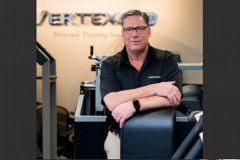For Resistance Training, More Complex Does Not Mean More Effective
If you spend any time reading health and fitness publications or blogs, you’ve surely been told about many different styles and methods for resistance training. You may be left wondering whether pre-exhaustion training, breakdown set training, or isometrics are the most effective form of resistance training to help you build strength and improve your strength, health and fitness. The good news is, you probably don’t need to worry so much about what type of resistance training you are performing, as long as you always work to momentary failure.
What Method of Resistance Training is Best?
In a graduate research paper called “Manipulation of resistance training variables for strength increases in young adults“, Mr. James Peter Fisher compared several studies that looked at methods of resistance training to determine whether manipulating different resistance training variables could produce better outcomes. The variables included load, type, frequency, rest interval, exercise order and intensity of effort. The results revealed something interesting; according to Fisher, “Analyses revealed that use of high-load and low-load and differing exercise order produce equivalent muscle performance results… The use of advanced training techniques in the form of pre-exhaustion training or breakdown set training produced no greater gains in strength than conventional sets of RT to momentary failure.” The final conclusion was that the studies examined demonstrated that considerable strength improvements could be attained by the use of an uncomplicated resistance training program where the individual aimed to work to momentary failure.
Some very specific training methodologies were compared for the research paper: according to Fisher, “Specific exercises for the lumbar extensors produced greater increases in isometric lumbar extension torque compared to Romanian deadlift training, whereas use of a whole-body-vibratory stimulus produced no greater increases in leg and back strength compared to isometric deadlift training alone. Resistance training 1.d .wk-1 produced similar strength increases to resistance training 2.d .wk-1 for the lumbar extensors in chronic low-back pain participants.”
Why the Method is Not as Important as the Effort
The simple fact is that your muscle fibers do not know what they are contracting against; they either contract, or they do not. For this reason, there isn’t going to be an enormous difference to your muscles between work performed in an isometrics routine where you resist against something immoveable to reach maximum effort, or a pre-exhaustion routine where you follow up a one-joint exercise with a two-joint exercise to work the targeted muscle beyond what it can do on it’s own.
Of course, that doesn’t mean that every single exercise routine is created equally; there’s a big difference to your muscles if you perform exercises that recruit from a lot of different muscles and offer a wide range of motion, or an exercise that targets a specific muscle and works it to it’s fullest potential. For example, to work the hip extensors in a compound movement, such as a squat, has a large range of motion, while a lumbar extension is a simple movement, and has a small range of motion. Exercises that recruit from multiple muscles will work each muscle less hard, so it’s important to isolate the targeted muscle during your workout and work it to it’s fullest potential, maximum effort. (This is one of the basic tenets of HIT, or High Intensity Training). We’ve talked about the difference between training modalities before, and how effort is more important than the specific method of resistance training you use.
To learn more about how to begin an effective resistance training regimen, speak with one of the trainers at Vertex Fitness.
Request a complimentary first session at Vertex Fitness, Voted the BEST Personal Training Studio on the Main Line
Click HERE and we will schedule a session to try it yourself
Complimentary First Workout Session








Leave a Comment